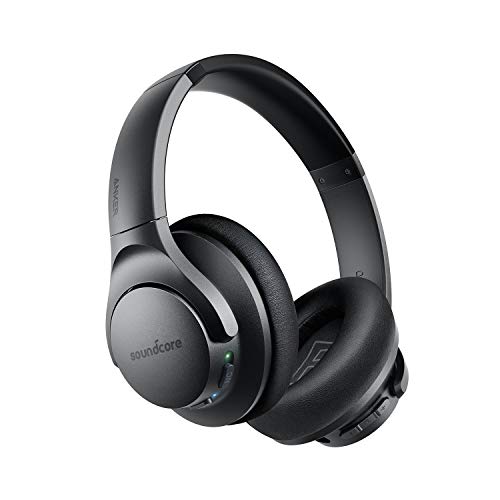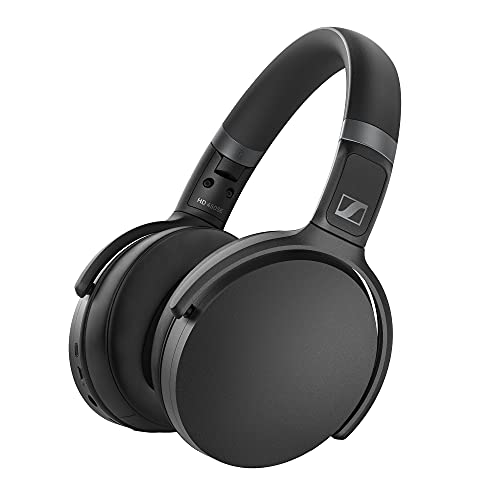How Noise Cancelling Headphones Improve Your Listening Experience
 Noise-canceling headsets form a barrier between your ears and the background noise. They’re great for airplane rides and everyday commutes, but they also boost productivity at work or in the comfort of your office at home.
Noise-canceling headsets form a barrier between your ears and the background noise. They’re great for airplane rides and everyday commutes, but they also boost productivity at work or in the comfort of your office at home.
They employ internal microphones to detect ambient sounds, and then electronically create anti-sound waves. This technology is most effective with low, harmonic sounds such as jet engines or fans, but has trouble with noisy office noises, irregular office noises, and higher frequencies.
How It Works
When sound waves pass through your ears, they cause vibrations to the eardrums, producing the sound you hear. Noise cancelling headphones work by emitting a tone that is 180 degrees out of phase with the background sounds, thereby canceling them out. They also employ technology to create a completely isolated listening environment so you can enjoy your music.
There are two kinds of headphones that feature active noise cancellation technology which are passive and adaptable. Passive noise cancelling uses padding around your ears to block out sound from outside, while adaptive technology digitally adapts to the environment you’re in. Adaptive noise cancellation is more sophisticated than passive noise cancelling and offers multiple listening options to customize the amount of external sound you’d like to hear.
With ANC, tiny microphones in the earcups or earbuds record the audio that you are listening to and any ambient sounds you’re in contact with. The ANC chipset analyzes the frequencies of sound signals that are coming in and then produces an inverted sound signal that cancels the original sound waves. Imagine it as the sound version of anti-ballistic weapons seen in war movies.
You may notice an interruption in the time between when you turn on ANC and hearing the effect. That’s the time it takes for the ANC to listen to the ambient sound, process it, and produce its anti-sound waves. High-frequency waves are more difficult to counter than lower-frequency waves, and they are especially difficult to invert after they reach your ears.
Although ANC is generally regarded to be safe, some users report vertigo or dizziness wearing headphones equipped with this technology. It’s not known what causes this. One theory is that the low-frequency noises cancelled by ANC fool your brain into thinking there’s a change in air pressure, similar to the unease some people feel when flying on airplanes.
Another reason for this discomfort is the added electronics that are included in ANC headphones, which can make it difficult to maintain the battery life. For this reason, it’s always recommended to bring along an extra pair of batteries for your headphones and use them only when necessary. This can also help lessen the risk of hearing loss resulting from the long-term use of headphones that have this feature.
Why it’s Important
Noise-canceling headsets create an sonic wall between you and the outside world. You only hear the music that you choose. They employ microphones that pick up and analyze the sounds around you. Then they create electronically opposite sound waves to cancel out those sounds. This effectively cancels out background noise so that you can concentrate on your work in a noisy office or even sleep on the train or plane, or simply relax at home.
The best noise cancelling headphones to use over-ear ears have been designed with high-quality audio to allow you to listen to your favourite tunes or podcasts. The bass, vocals and other elements in your music or audio will be crystal clear. This is an excellent way to enhance your listening experience, regardless of regardless of whether you’re an avid music lover or a basshead. You’ll be able to hear the lyrics of your tunes more clearly, and also be aware of the intricate details that make up the melody and harmony.
It is vital to sleep well for your health and wellbeing However, Over ear headphones noise cancelling wireless many suffer from difficulty sleeping due to noises outside. Over Ear Headphones Noise Cancelling Wireless-ear headphones noise with noise cancellation can help you sleep better, so you can wake refreshed and ready for the next day.
Noise cancellation technology is becoming increasingly popular in wireless headphones, with both active and passive models available. They typically have ear cups that wrap around the ears, creating a seal that blocks out unwanted sounds. They employ a noise cancellation algorithm to limit the amount of sound you hear. They also have high-quality audio support that ensures your music or audio is crisp and clear.
Certain headphones have a feature to block out background noises so that you can still be aware of your surroundings without having to take them off. This is ideal for commuters, or anyone who would like to be aware of their surroundings.
The Monoprice BT-600ANC is a very inexpensive pair of over-ear headphones which come with ANC and ambient awareness modes. The headphones are lightweight, comfortable for long periods of time, and have an audio quality that will satisfy the majority of listeners. Although they don’t have the same clarity in the mid and high frequencies, they are still a great choice for the cost.
How to Choose the Best Headphones
When you’re choosing a pair headphones, there are many aspects to consider. If you’re looking for a great budget option like the Monoprice’s BT-600ANC, or something higher-end that has high-quality audio codec support There are a variety of choices. It’s crucial to select headphones that are suitable for your requirements in terms of comfort and functionality. The right headphones will enhance your listening experience, whether in the car or at the office.
When choosing a pair of noise cancelling headphones, the most important thing to consider is whether you prefer passive or active noise cancellation. Passive noise isolation uses the physical design of the headphones to seal between your ears and block ambient sounds. This can cut down the high- and mid-frequency sounds by as much as 30 decibels.
Active noise cancellation takes a step beyond passive noise cancellation, by generating low-frequency sounds that cancel external noise. This is achieved by using microphones to detect the frequencies of noise, and then generating the same frequencies in reverse to block the noise before it reaches your ears. This method is somewhat more expensive than passive noise isolation, but it’s also more efficient.
Apart from deciding between passive and active noise cancellation, there are other aspects to consider, such as comfort and design. You’ll want to ensure that the headband is comfortable and doesn’t place pressure on your neck or head. Also, you’ll want to make sure that the earpieces fit comfortably over your ears without feeling too tight or uncomfortable.
In the end, you’ll need to be sure that the drivers for your headphones are high quality and provide high-quality audio quality. The driver is a part that transforms electrical signals into sound pressure. It is measured in millimeters. In general, bigger drivers offer better performance, especially for bass performance.
There are plenty of inexpensive headphones that claim to block out noise, it’s worth spending more on a pair that will offer you a truly immersive listening experience. Thankfully, there are plenty of great choices to choose from, such as the Bose QC35 II and Sony WH-1000XM5. Both provide top-quality audio with impressive noise cancellation and an elegant design.
Final Words
When choosing headphones, you should also be aware of other features. The dimensions and shape of the ear cups, for example, determines the effectiveness of the headphones in protecting your ears from external sounds. Smaller earcups may leak sound, causing disturbance to those nearby.
The ear cup design can influence other aspects of the quality of headphones, such as their frequency response as well as total harmonic distortion. While these aspects aren’t directly related to sound quality however, their impact is usually an effect of the physics that is involved in the design of every pair of headphones.
Headphones that have a flat and wide frequency response can provide an immersive and natural experience. On the other hand, headphones that have narrow frequencies might feel more confined and artificial.
Your headphone selection will also be influenced by the type of media that you listen to. Stereo music can be enjoyed with either on-ear or over-ear headphones. Video games require great audio signals to work well Some users prefer in-ear models because of this.
